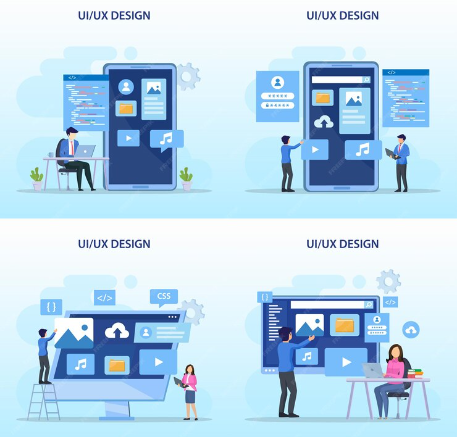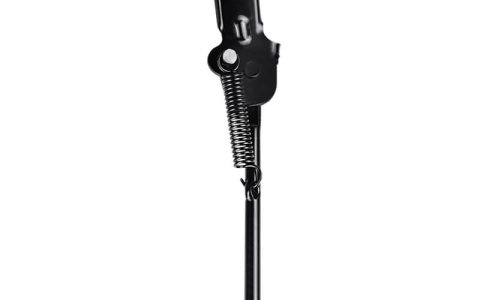
In the ever-evolving realm of SaaS, UI/UX design serves as the linchpin, bridging technological innovation and user satisfaction. By wholeheartedly embracing ethical practices, implementing personalized features, prioritizing agility, fostering environmental consciousness, and consistently innovating, designers can shape SaaS platforms. These platforms not only meet present needs but also anticipate and surpass future expectations. In this era of digital transformation, the seamless integration of cutting-edge technology and user-centric design becomes the blueprint for crafting tomorrow’s SaaS experiences today.
Understanding the Essence of UI/UX Design for SaaS
UI/UX design is the backbone of any successful SaaS application. It goes beyond creating visually appealing interfaces; it encompasses the entire user journey, from the moment they land on the platform to achieving their goals seamlessly. Thoughtfully crafted UI/UX not only elevates user satisfaction but also significantly contributes to the enduring success of a SaaS product. By fostering an intuitive interface, it establishes a foundation for long-term viability and user engagement.
The Fundamental Principles of UI/UX Design
- User-Centric Approach: Adopting a user-centric mindset is paramount in SaaS UI/UX design. Understanding the target audience, their needs, and pain points lays the foundation for creating an interface that resonates with users.
- Simplicity is Key: Navigating the fine line between feature-rich functionality and simplicity poses a challenge, yet it is crucial for crafting a well-rounded user experience. A clutter-free design reduces cognitive load, making it easier for users to navigate and accomplish tasks effortlessly.
- Consistency across the Platform: Consistency throughout the Platform: Familiarity is promoted by consistency in design components including color schemes, typefaces, and interaction patterns. As users go through the various components of the SaaS service, they ought to get a sense of coherence.
- Intuitive Navigation: Seamless navigation is the cornerstone of a positive user experience. Logical flow, clear pathways, and well-organized menus contribute to an intuitive interface, allowing users to find what they need without frustration.
The Visual Aesthetics of SaaS UI/UX Design
- Appropriate Use of Colors: The color palette employed should align with the brand identity, thereby ensuring readability and accessibility. Moreover, colors possess the ability to evoke emotions and influence user behavior, underscoring the need for thoughtful consideration in their selection.
- Typography Matters: Choosing the right fonts enhances readability and contributes to the overall aesthetics. Legible typography creates a polished look and ensures that users can absorb information effortlessly.
- Engaging Imagery: Visual elements, including images, icons, and illustrations, should complement the brand and convey information effectively. Engaging visuals contribute to a memorable user experience.
Responsive Design for Diverse Devices
In an era where users access SaaS applications across various devices, responsive design is non-negotiable. Ensuring that the interface adapts seamlessly to different screen sizes enhances accessibility and caters to a broader user base.
User Onboarding and Guidance
- Streamlined Onboarding Process: The Onboarding process should be intuitive and efficient. Guiding users through the initial setup and providing contextual information ensures a positive first impression and reduces the likelihood of abandonment.
- In-App Guidance: Incorporating tooltips, tutorials, and contextual help within the application aids users in understanding features and functionalities. This proactive approach enhances user confidence and reduces the learning curve.
Performance and Speed Optimization
Efficient SaaS platforms prioritize performance. Slow loading times and sluggish responsiveness can lead to user frustration and abandonment. Optimizing code, compressing images, and leveraging caching mechanisms contribute to a snappy user experience.
User Feedback and Iterative Improvement
- Feedback Loops: Establishing channels for user feedback is integral to continuous improvement. Actively seeking and analyzing user input provides valuable insights into pain points, preferences, and areas for enhancement.
- Iterative Design Process: UI/UX design for SaaS is an iterative process. Regularly updating and refining the interface based on user feedback ensures that the platform evolves to meet changing user needs and industry trends.
Accessibility and Inclusivity
Designing with accessibility in mind ensures that SaaS platforms are usable by individuals with diverse abilities. Prioritizing features such as alt text for images and keyboard navigation contributes to a more inclusive user experience.
Security and Trustworthiness
- Transparent Security Measures: Building trust is crucial in SaaS applications. Communicating security measures, such as data encryption and compliance with industry standards, reassures users about the safety of their information.
- User Authentication: Implementing secure yet user-friendly authentication methods enhances the overall security posture. Multi-factor authentication and robust password policies contribute to safeguarding user accounts.
Embracing Ethical Design Principles
Beyond aesthetics and functionality, ethical considerations are gaining prominence in UI/UX design. Designers must prioritize user well-being by avoiding dark patterns, ensuring transparent data practices, and respecting user privacy. Ethical design aligns with societal expectations and builds trust, fostering long-term user loyalty.
Personalization for Tailored Experiences
In the era of personalized content, SaaS platforms can leverage user data to deliver tailored experiences. AI-driven personalization algorithms can analyze user behavior to recommend relevant features, making the interface feel customized and intuitive. However, it’s crucial to prioritize user consent and data security to maintain trust.
Staying Agile in Design Iterations
Agility is a cornerstone of successful UI/UX design in the fast-paced SaaS environment. Embracing agile methodologies allows design teams to respond swiftly to user feedback, industry shifts, and technological advancements. Regular sprints and iterative cycles enable continuous improvement, ensuring the SaaS platform remains adaptable and resilient.
Investing in User Education and Support
Empowering users through education and robust support systems is integral to a positive UI/UX. Clear documentation, video tutorials, and a responsive support team contribute to a smoother Onboarding process and foster user confidence. Investing in user education pays dividends in user satisfaction and reduces the burden on customer support.
The Mobile-First Approach in UI/UX Design
As mobile usage continues to soar, adopting a mobile-first design approach is imperative. SaaS platforms must prioritize responsive designs that offer a seamless experience across devices, with a particular focus on mobile interfaces. This approach ensures accessibility for users who predominantly access the platform via smartphones or tablets.
A/B Testing for Continuous Optimization
A/B testing is a powerful tool for optimizing UI/UX design. By comparing variations of design elements, such as button placement, color schemes, or messaging, designers can identify the most effective options based on user engagement and conversion metrics. This data-driven approach facilitates evidence-based decision-making in design iterations.
Environmental Considerations in Design
In an era of heightened environmental awareness, incorporating sustainability in UI/UX design is a responsible choice. Designers can contribute by optimizing graphics for energy efficiency, reducing unnecessary server load, and promoting eco-friendly features. Sustainability aligns with user values and reflects positively on the brand.
Cross-Platform Consistency for Brand Cohesion
SaaS platforms often extend beyond web applications to include desktop applications, mobile apps, and browser extensions. Maintaining consistency across these platforms is crucial for brand cohesion. A unified design language ensures that users have a seamless experience, regardless of the device or platform they choose.
Adaptive User Interfaces for Accessibility
Enhancing accessibility goes beyond catering to users with disabilities; it also addresses diverse user preferences. Adaptive user interfaces allow users to customize their experience, such as font size, color themes, or layout preferences. Providing these options ensures inclusivity and empowers users to tailor the interface to their needs.
As we navigate the ever-evolving landscape of SaaS, UI/UX design stands as the linchpin between technological innovation and user satisfaction. By wholeheartedly embracing ethical practices, implementing personalization, prioritizing agility, fostering environmental consciousness, and consistently innovating, designers can shape SaaS platforms. These platforms not only meet current needs but also anticipate and surpass future expectations In this era of digital transformation, the marriage of cutting-edge technology and user-centric design is the blueprint for crafting tomorrow’s SaaS experiences today.



